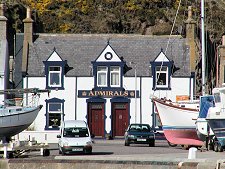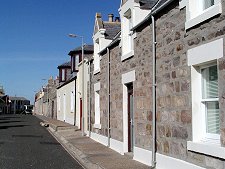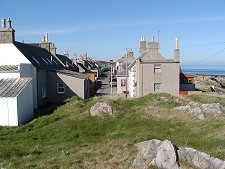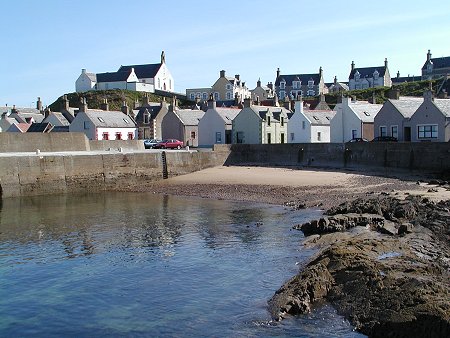 Harbour, Church and Fishermen's Cottages |
As early as the 1400s the village of Findochty crowded around the natural harbour known as Crooked Haven. It expanded as a fishing port through the 1700s and 1800s, and by 1850 was home to 140 fishing boats. But the expansion from 1877 of nearby Buckie provided a better harbour, and by the middle of the 1900s much of Findochty's fleet was operating from there instead.
What you find these days is a traditional fishing village centred on its harbour, but used more by leisure sailors than by fishermen. The harbour itself is well sheltered by headlands east and west, and by walls built to fend off the seas that crash into this north-facing coast. The attractive cottages that jostle for position around the harbour are typical of this stretch of coastline.
At the western end of the sweep of buildings leading around the harbour, and sheltered by the gorse-strewn ridge behind it lies the Admirals pub: very definitely a sailors' haunt.
Beyond and above the cottages at the other end of the harbour, and standing prominently on a rocky bluff, is Findochty Church. In some ways this can be seen as the geographical centre of a settlement that actually extends well to the east of the harbour.
If you follow the road that runs past the end of the bluff you find yourself amongst more fishermen's cottages, laid out in rows along and running back from the increasingly rocky outcrop of Long Head. While it's usual on this coast for the cottages nearest the sea to be placed with their window-less ends facing it, on Long Head one row of cottages actually backs on to the rocks just above the sea. This must be a wild place in a northerly gale on a winter night.
Sheltered by Long Head you will find Finochty's small and sheltered beach. This has charm but could not be called pretty, being backed by dwellings, working huts and a range of buildings.
Findochty oozes character and is well worth a visit. Catch it in the right light and much of it looks extremely attractive too. But what makes it so worthwhile is the sense that it is a "real life" settlement. Though welcoming, it is not dressed up to please visitors and nor does it go out of its way to cater for them. Come and see some of the real Scotland.
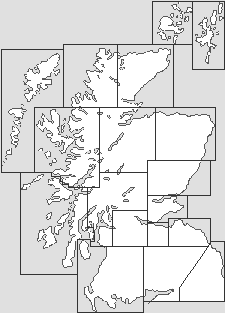
|
|
|
Visitor InformationView Location on MapWhat3Words Location: ///traffic.ecologist.caps |
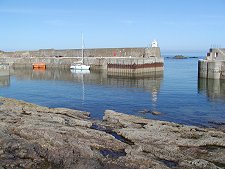 Harbour Entrance |
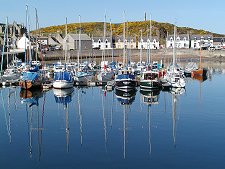 Findochty Harbour |
